Ian Biazzo, then a University of Central Florida PhD candidate, was working on a controlled burn at The Nature Conservancy’s Tiger Creek Preserve in Florida when he noticed a single frog hop off a palmetto bush and land in a pile of ash. The fire was burning low and slow, and he watched as a few animals, like the frog, dispersed. The visual made him wonder: “How do prescribed fires affect animals like tree frogs?”
Some earlier monitoring research had indicated that after something big like a forest fire, researchers count fewer frogs. Perhaps they died or they migrated. But if they went somewhere, where did they go?
But tree frogs are not easy to study. They spend most of their lives in trees and yet much of the research into them is focused on vernal pools, the wetlands where they breed—a mere snapshot into their lives. So, in 2019, Biazzo set out to study what he calls the “final frog-tier”—tree canopies home to the pine woods tree frog. Working at TNC’s Disney Wilderness Preserve, Biazzo would eventually gather 27 months of data, monitoring tree frogs before and after controlled burns. Biazzo, now an assistant professor at Rollins College in Florida, tells how he gathered that data and what he learned from it.
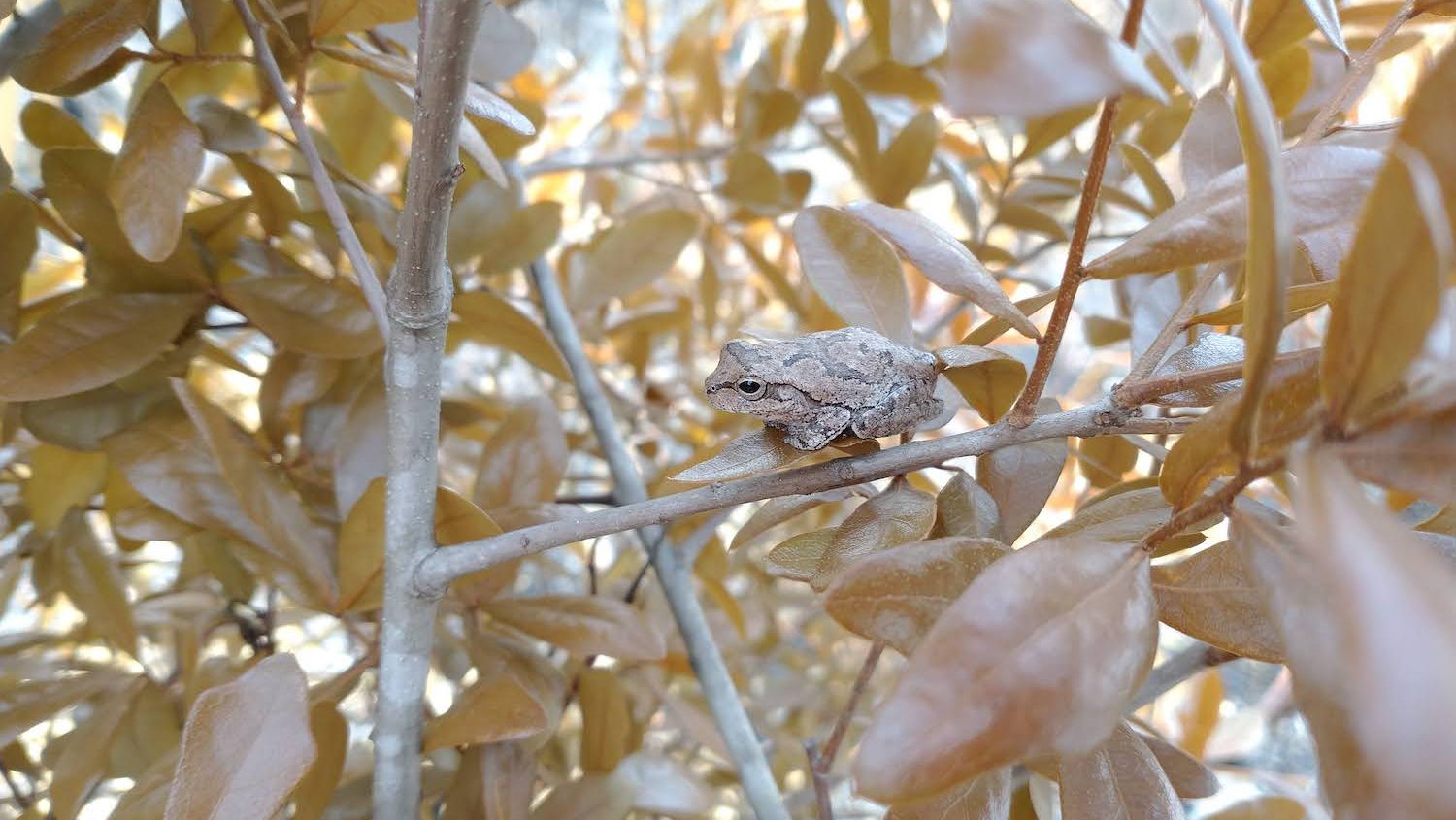
- So how did you set out to answer your question?
-
In ecology, we’re all very passionate about ecosystems and species, but behind that is this idea of experimental design, and how you can turn the landscape itself into an experiment. That is what I wanted to do: use prescribed fire as an experiment with replicate plots within the preserves. So then it became a numbers game: How many plots can I reasonably set up, and what are the animals going to do?
- So how did you get around that?
-
Well, because tree frogs spend most of their life up in trees, I attached PVC pipes to trees at two meters high to catch the frogs. People often ask me what the heck do you mean PVC pipes? You just put a pipe on a tree and frogs appear?
It is actually that simple. It’s just a pipe that you screw onto a tree—open on the top, closed on the bottom, so that it can collect a little bit of water. And that cavity that you just created, that little refuge, is perfect for a frog, and they can come and go as they please.
This is not something I came up with. People have been catching frogs in pipes for decades now, and they really do work. Sometimes I’d look into a pipe and there’d be a frog. Sometimes I’d look in and there’d be 12.
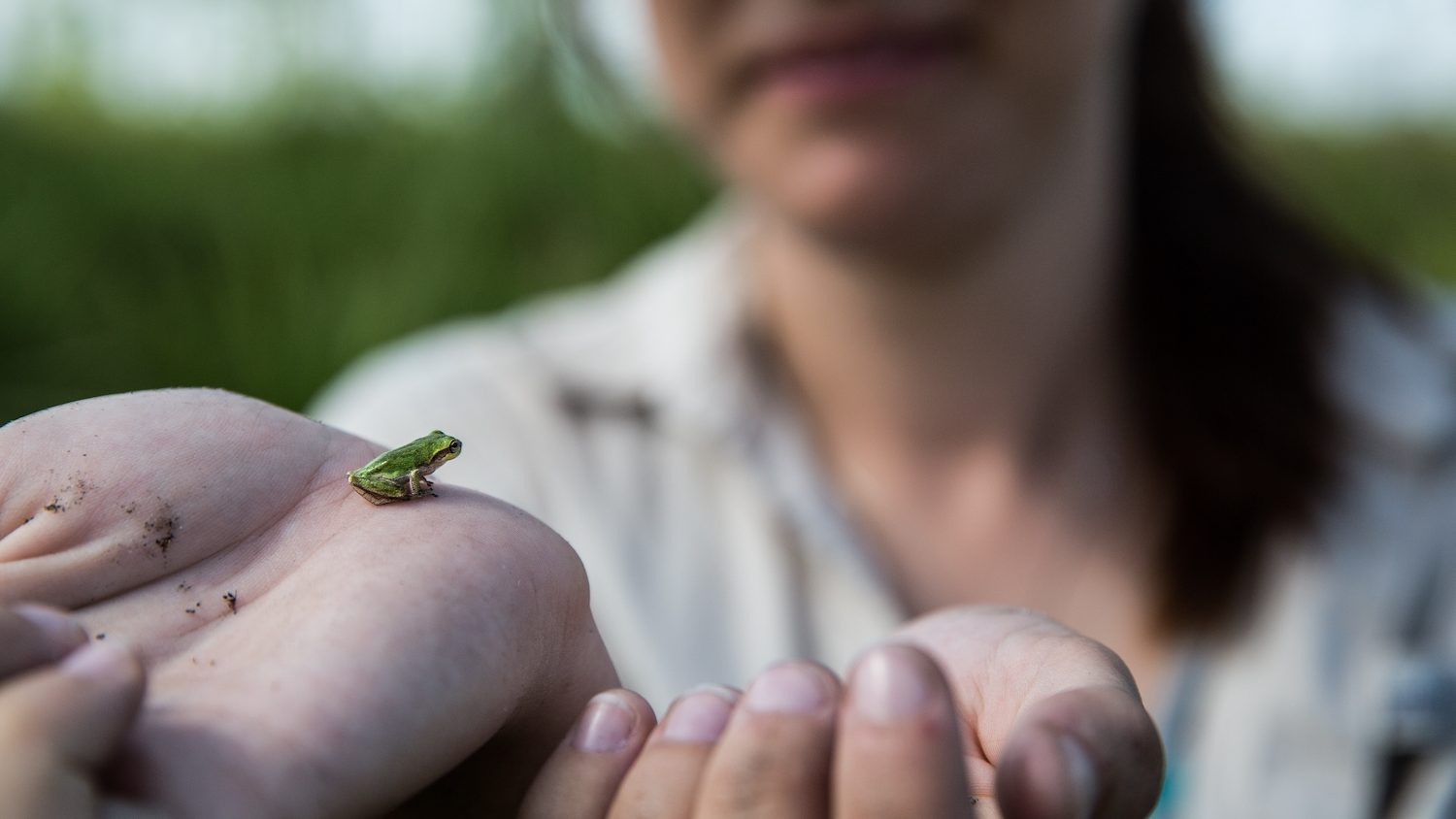
A pinewoods tree frog seen to scale at Disney Wilderness Preserve in Florida. © Ralph Pace
- You installed those first 2-meter-high PVC pipes in the fall of 2019 at TNC’s Disney Wilderness Preserve and then checked those traps for frogs around every 6 weeks in the months before and after scheduled controlled burns. When you did find frogs, did you take their biological information, make any markings on them?
-
Yes, we used “visible implant elastomer” or VIE [to mark the frogs]. It is a bio-compatible dye that goes right under their skin. Based on the colors you use, you can start to make different combinations, kind of like mini tattoos. It’s relatively non-invasive—previous methods for studying frogs involved clipping toes. Then, we would record their sex, and of course, we would measure them. So, between the measurements, the sex and the markings themselves, we were able to identify recaptures with a rate of 99%. It was a very reliable method.
- What were you hoping to learn from the data?
-
I was hoping to get population-level data for as many native tree frog species as we have, which is four, but I ended up really only getting usable data for one species, which was the pine woods tree frog. While it’s a cute frog and really interesting model species to work with, I was more interested in the landscape dynamics themselves. What I mean is, I think the frog using the trees as refugia during a fire is an example of many species that use the three-dimensional elements of the landscape during these disturbances. So the frog, while it’s important, is just a small part of a bigger picture.
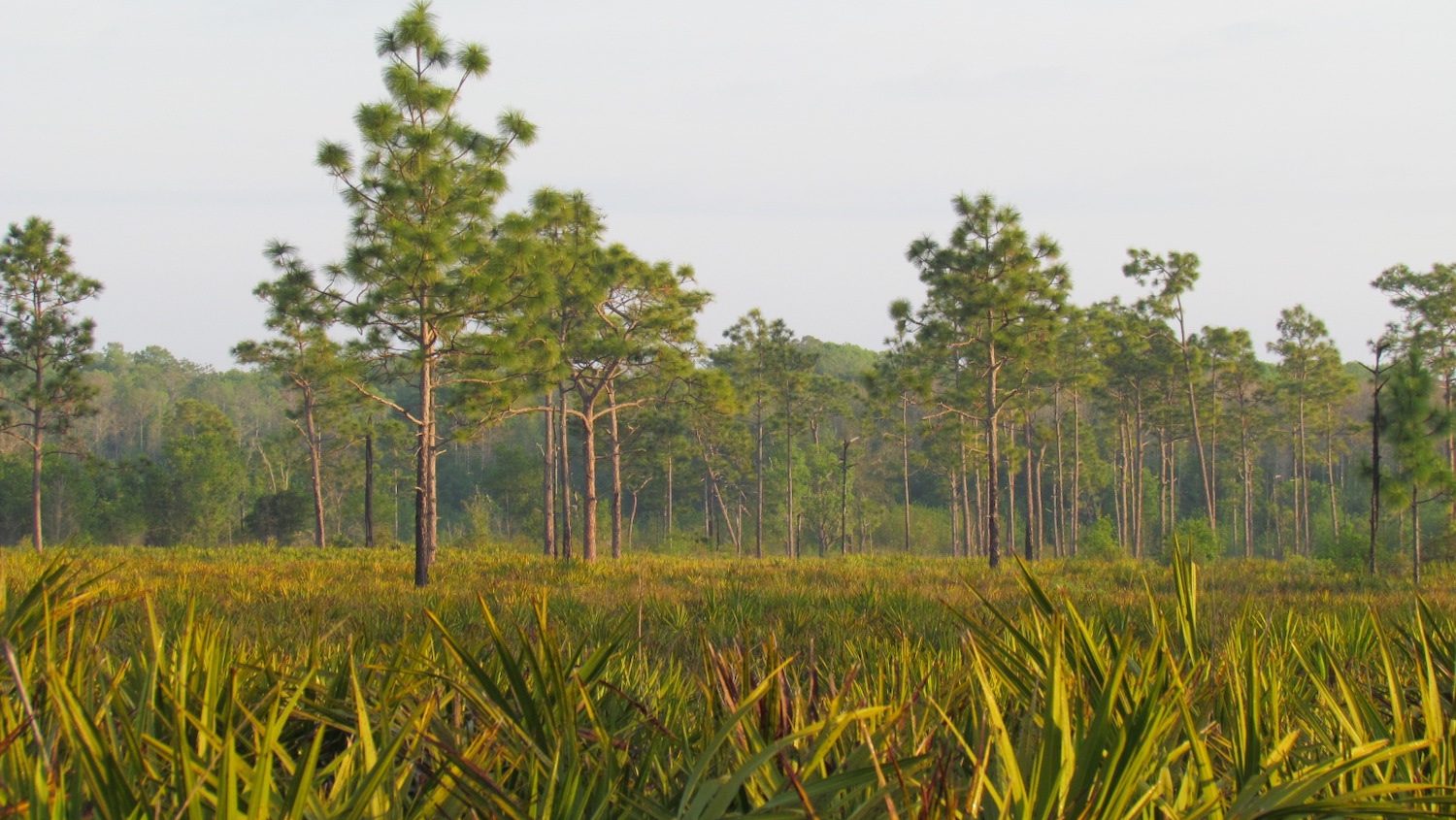
Ian Biazzo studied tree frogs in the pine flatwoods landscape like this one. © Ian Biazzo
- Ultimately you decided to look beyond your initial ground-level study. Tell me about that.
-
That first study, which was looking at 240 trees across Disney Wilderness Preserve—and those trees were evenly spread amongst eight different land units that had a scheduled burn—that study was going great. I had a lot of data points for each of the plots.
So it gave me the opportunity to say, “Okay, this is working, or at least it’s working for pine woods tree frogs. But I still think this is only part of the picture. Where else could these animals be going?”
Read More from TNC Magazine
A version of this column ran in Issue 1 2025 of Nature Conservancy magazine. Other stories from the issue are available online.
Well, they could be making long-distance migrations. But, because I had [the frogs] individually marked, I could see where each came from. The overwhelming percentage of the time, they were found in the same exact tree that they were always found in. So, they’re not necessarily making these large migrations, which means they’re finding somewhere extremely local to hide. That’s what kind of tipped my decision to say, “Okay, we’ve got to explore a little higher in the canopy. Let’s set this up in a similar design, up at different levels in the tree, and see what those data look like.”
We were able to do this on 12 trees spread across four different plots, each with different fire treatments. Then we set up pipes at three meters, six meters, nine meters, and in the best case, 12 meters [high on the tree trunks]. If it wasn’t a 12-meter tree, we did, like 11 or 10 and a half meters high.
- How often did you check the pipes?
-
For the for the longer-term study, the one that was on the ground level, we went out approximately every six weeks. For the ones up in the canopy, that was a shorter time window overall, so we went out every two weeks.
Whenever we captured a frog, we measured it, identified it, marked it if it was new. We released it at the base of the tree it was found in. This gives it some agency. The frog can say, “Okay, well, I’m never going back to this tree, and it could hop away forever. Or it can say, well, this is my tree. I’m just going to climb back up.”
Well, first of all, the data indicate that the frogs have their home tree, and they stay there. But the other fun thing we did is for the canopy study: Sometimes, we would release the frog at the base of the tree, and then go stand somewhere far away, and with binoculars, we could watch what the frog did. And let’s say, for example, a frog was found at the nine-meter pipe. We bring it down. We measure it, mark it, release it at the base. But we would watch this frog skip over the three-meter pipe, skip over the six-meter pipe, and climb right back up and go inside the nine-meter pipe. That happened a bunch of times.
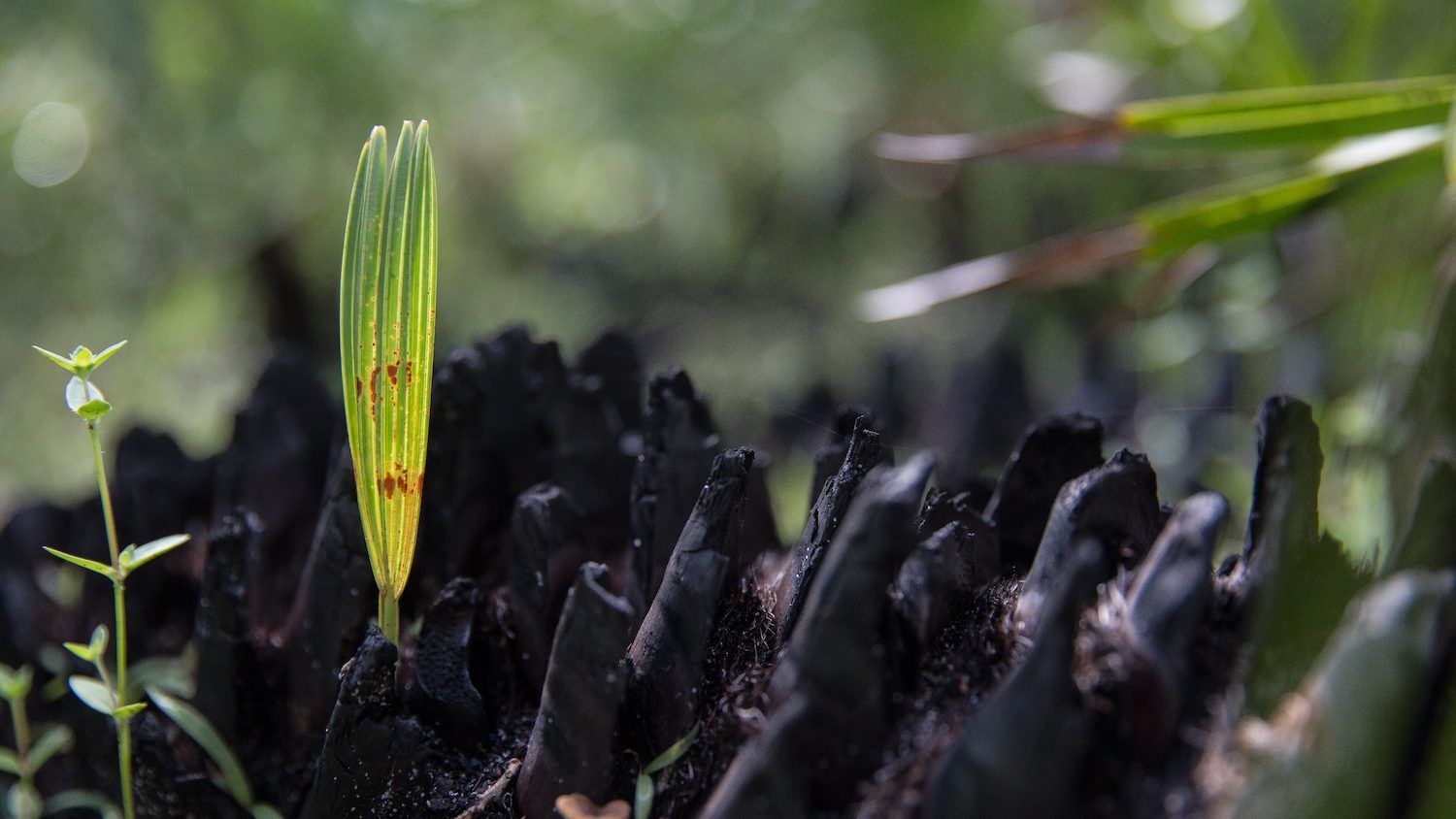
A new shoot emerges from a singed palm at Disney Wilderness Preserve. © Ralph Pace
- Ultimately what did you find?
-
Not surprisingly, my study indicates that there’s strong evidence that they are using the trees all the way up to 40 feet, up to the crown of the tree, as a safe place during fires, and also for several weeks after the fire, when the ground is still somewhat inhospitable. [When] there’s no greenery, there’s no places for them to hunt and hide, so they actually stay up the trees.
- Thinking back to that first tree frog in a burn that triggered your research question, what application do you think your study might have on things like controlled burn processes?
-
We’re using prescribed fire as a management tool ubiquitously in United States and even globally. I think the major takeaway from the study is that the three-dimensional component of the landscape matters. If you burn as hot and fast as you can, and just say, get the fire going and let it take off, you risk burning up some of the mature trees in any system.
And while some of that is, of course, inevitable, there’s probably a good reason to consider preserving that three-dimensional heterogeneity. Large trees serve as refugia for animals. That is the takeaway. And while we probably could have guessed that tree frogs climb trees, the data shows they really climb trees after a fire.
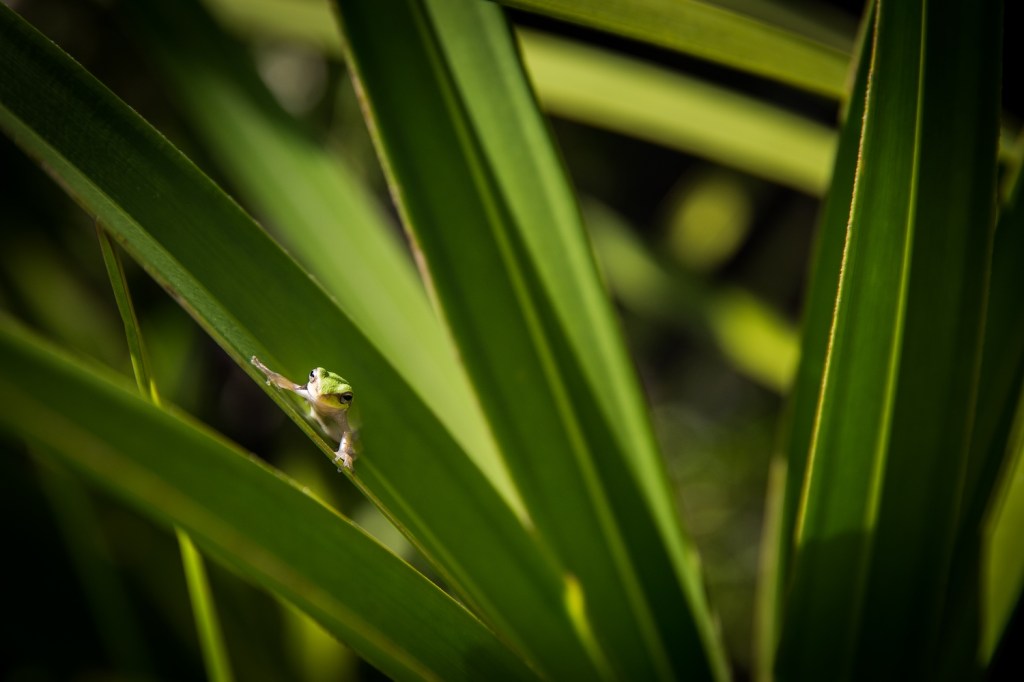



I should’ve said, this writer and the researcher display…
I don’t get out into “the field” much anymore, but one of the best takeaways from this is just how much fun field biology can be: not always by a long shot, but a clear message to young people that science can be enjoyable as well as a way to address ecological questions and problems we’re all faced with. This writer/researcher displays a great attitude.